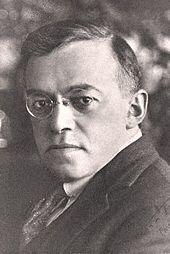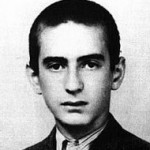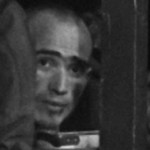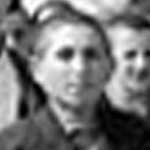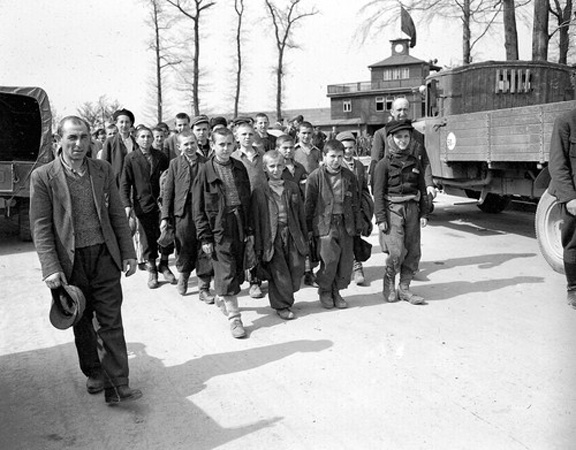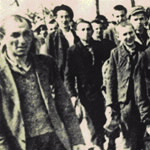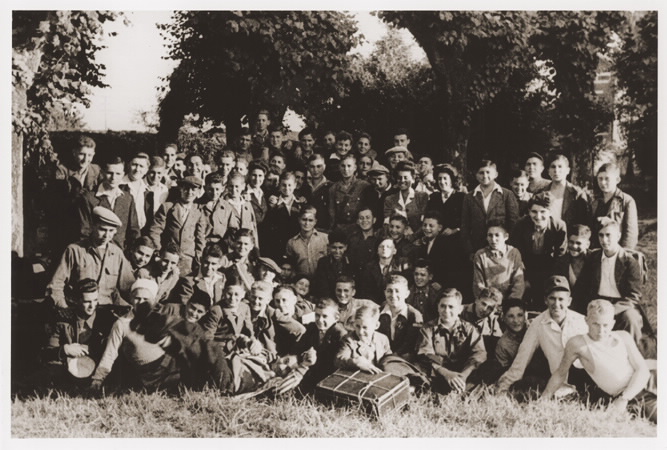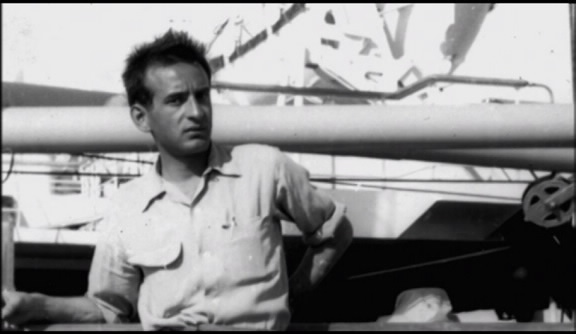Elie Wiesel and the Mossad
Sunday, January 2nd, 2011
By Carolyn Yeager
copyright 2011 carolyn yeager
Is Elie Wiesel just another Mossad asset? The question is not as surprising as it may sound.
The question of how involved Elie Wiesel was with the early terrorist groups that eventually became The Mossad, Israel’s feared intelligence arm, is one that must finally be asked and answered in a straightforward manner. Certainly, Wiesel is no stranger to politics from his young years. Zionism, along with Marxism and Communism, had strong currency among Eastern European Jews during the 20’s and 30’s; it grew only stronger in the atmosphere of the concentration camps and ghettos created by the Hitler regime and its allies during WWII.
By the time the camps were “liberated” and their inmates, along with others who desired to move about and get a new lease on life, streamed into the Allied Displaced Persons [DP] camps in Germany in 1945, the Zionist cause had reached fever-pitch. These camps, in which all Jewish people were treated with most-deserving status—no matter how they behaved or what their actual past had been—were hotbeds of recruitment for Jewish “resistance” groups such as Haganah, Irgun and Lehi, as well as for illegal transportation and entry into Palestine.
Background of Jewish Terrorist Organizations
The first Jewish paramilitary organization, Haganah [“The Defense”], was formed in 1920. It guarded the Jewish settlements that were forming in Palestine from the Arabs, who were beginning to resent the intruders. In 1931, the more militant elements of the Haganah splintered off and formed the Irgun [also called Etzel and “Defense B”], led from 1943-48 by Menachem Begin.
After 1945, the Haganah was a full-fledged terrorist organization, carrying out bombings, sabotage and illegal immigration of Jews into Palestine. Famous members included Rabin, Sharon, Dayan, Zeevi and Dr. Ruth Westheimer. After Israel became a state in 1948, the Haganah became the Israeli Defense Force.
The Irgun policy was based on ultra-radical Ze’ev Jabotinsky’s “Revisionist Zionism,” which declared that every Jew had the right to enter Palestine, and that active retaliation and Jewish armed force were necessary methods to ensure the Jewish state. It was the Irgun that bombed the King David Hotel—killing 91 people and injuring 46—and carried out the infamous Deir Yassin massacre, along with the Lehi [the Stern Gang]. The Irgun is the predecessor to today’s Likud Party.
(L)Avraham Tehomi, the first Commander of the Irgun; (C) Ze’ev Jabotinsky, Irgun ideologist; (R) Avraham (Yair) Stern, founder of The Stern Gang
A commander in the Irgun, Avraham Stern, defected from the Irgun and founded the Lehi group, also known as the Stern Gang, They were even more fanatical than Irgun, and declared total war against imperialism and the British Empire, even while the British were at war with the Germans.
After May 14, 1948 [Israel’s independence], Irgun representatives in France purchased a ship and weapons, and brought it to the Israeli coast in violation of a ceasefire agreement with the neighboring Arab states and the United Nations. It was with the Irgun in Paris, France that Elie Wiesel found his first job.
Wiesel in France
Wiesel writes in All Rivers Run to the Sea 1, his memoir, that he and his young fellow “survivors” wanted to go to Palestine right from Buchenwald, but their American liberators couldn’t allow them to do that. They settled for free transportation and lodgings in France, sponsored by a Jewish welfare agency, the OSE, and the government of Charles De Gaulle.
Now, if it turns out to be true that Wiesel was not at Buchenwald, as I believe, then he was not on that particular passenger train trip to France that he describes on page 109 of his memoir All Rivers. There, he gives a strange explanation for why he never received French nationality:
The train stopped at the border, and they had us get off. A police official made a speech, of which I understood not a word. When I saw people raising their hands, I assumed they were volunteering for some task. […] I later found out that the policeman had asked for a show of hands of all those who wished to become French citizens. Since I did not respond, they probably wrote in my file: “Refused French nationality.” The consequence of my blunder was endless harassment and administrative hassles …
This is questionable for several reasons. First, he says prior to the above paragraph that he shared a train compartment with a boy from Sighet who knew a few words in French. But why would any of the boys be expected to know French? They wouldn’t. Second, there were two Jewish American Army Chaplains accompanying them who were supposedly looking out for their welfare. Third, Wiesel says, “They probably wrote in my file.” Didn’t he ask about it? Certainly he would have gotten another chance once he explained his mistake to the welfare authorities, since the point of the whole operation is that the boys from Buchenwald, if they were orphans, were offered to become French Nationals.
This simplistic and nonsensical explanation for why he spent years as a “stateless person” is just not convincing. It does not fit the world as we know it. This will be repeated in following explanations he gives for his experiences.
Wiesel writes that they were greeted by the OSE, the children’s rescue society, with all good things: a splendid chateau, lavish meals, smiles and promises. His smaller “group of young believers” requested kosher food and received it. They were also provided with their requested bibles, prayer books and Talmudic tractates, and a study/prayer room.2 Wiesel appears not to be interested in assimilating as a Frenchman, even though he finds his eldest sister to be living nearby. Among this group of youths were Zionists and Bundists. Elie was the former, while the Bundists preferred to “rebuild a Jewish cultural life in the Diaspora.”
Wiesel says he “rededicated” himself to his sacred studies, and in between played chess. One day:
…a couple of strangers wanted to take pictures as we played. One of them asked some questions in bad German; I answered in good Yiddish. Someone said they were journalists, but I had never met a journalist before; they were of no interest to me, and I didn’t see why I should interest them.3
This became the published photograph that is said to have alerted his sister Hilda, who had married an Algerian Jew and was living in Paris, to his whereabouts. In a few days, she had contacted the OSE and the brother-sister reuniting was arranged. But why have we never seen this picture? Why has it disappeared and why does no one of the holocaust historians or Wiesel biographers care enough to search for it? We can reasonably expect that sister Hilda would have kept that magazine picture as a treasured memento, but once again we are confronted with the unexplainable. 4
It was many months later that he reunited with his second sister, Bea, who was in a DP camp in Germany, waiting on a visa to the U.S. or Canada. According to All Rivers, Bea had traveled to Sighet, where Elie had refused to return. There, someone she met told her that her brother was alive. No further details on this—how and why she went to Sighet, and why the folks there would know. At this point in the memoir, Wiesel writes some very sentimental passages that take our attention away from his sisters’ discovery of his whereabouts, and never gets back to it.5
Early connections with Jewish Resistance
The next item of interest to our topic comes on page 120 of All Rivers. In 1947 the OSE arranges for a young Jewish teacher, François Wahl 6, to give Wiesel private French lessons, since he has decided to remain in France for the time being, rather than to emigrate to Palestine [illegally] or to the Americas or Australia. Wiesel writes that, while only two years his senior, Wahl seemed much older, and that “the bond between them was deep and true.” He then informs us that “in 1947, as the underground war raged in Palestine, François performed important secret tasks for a Jewish resistance group.”
During this time, Wiesel’s stated pursuits had solely to do with Jewish religion and politics. Actually, that has never changed, in spite of the effort to make it appear that he was, for a time, a real student at the Sorbonne [see here]. He associated only with other Jews, all of whom were naturally interested in the events in Palestine, by staying within the Jewish welfare system even though he was transferred twice—first to Taverny, then to Versailles. At the latter, he was not only with his Buchenwald group but with other Jewish orphans who had given themselves false identities and/or had lived with Christian families during the war.7
When Wiesel’s best friend Kalman left for Palestine [illegally], Wiesel stayed behind and kept up his love affair with Jerusalem from afar. There can be no doubt that he was familiar and highly sympathetic with the Zionist ideas of forcing their way into Palestine, and had no qualms about their methods.
On page 150 he confides: “I had wanted to write ever since childhood. In Sighet I often went to the offices of the Jewish community to write a page of Bible commentary on the only available Hebrew typewriter.” [See my questions about Wiesel’s typing ability here.] On the same page, Wiesel questions the value of writing, and more particularly, of words themselves.
… I told myself I should write. But I had to be patient. Someday, in years to come, I would celebrate memory, but not yet. Even then I was aware of the deficiencies and inadequacies of language. Words frightened me. What exactly did it mean to speak? Was it a divine or diabolical act? The spoken word and the written word do not reflect the same experience. The mysticism with which my adolescence was imbued made me suspicious of writing.
And on and on. This is a person caught in such a narrow perspective of life based on readings of Judaic mysticism that he has difficulty seeing anything just for what it is. Also, someone who forever contradicts himself. He wants to write but is frightened of words; he loves and hates at the same time.
At the “end of summer” the counselor finally persuades Elie to leave the comfort of Versailles and take a room of his own near the counselor’s home—he was nineteen and one of the last of his group to leave. From here, he continued seeing his mentor Shushani, his French teacher François, and followed Jewish current events closely. He says he bought the newspapers regardless of the expense.
Finally, the momentous event of the U.N. resolution of Nov. 29, 1947, partitioning Palestine to create a homeland for the Jews, excited Wiesel into action. He found the Paris office of the Irgun newspaper, Zion in Kamf, and offered his services. He was accepted. This is what he writes.8 Whether this is the way it really happened we can’t be sure, knowing as we do how Elie Wiesel throughout his life has played fast and loose with the facts.
Next: Part Two – The activities of the Irgun dominate Wiesel’s life in 1948
Endnotes:
- Elie Wiesel, All Rivers Run to the Sea, Alfred A. Knopf, 1995, 432 pgs.
- Ibid, p 110
- Ibid, p 113
- Hilda DID keep it and showed it at the end of her Shoah Foundation “visual history” interview. I wrote about it and posted the picture here.
- Ibid, p 115
- Warren Routledge writes that Wiesel’s biographer Jack Kolbert changed Francois Wahl’s first name to Gustave, probably because Francois Wahl became well known as a homosexual “since he was 15 years old.”
- Ibid, p 130
- Ibid, p.157
Category Featured | Tags: Tags: All Rivers Run to the Sea, Francois Wahl, Haganah, Irgun, Jewish orphans, Mossad, Oeuvre de Secours, Shushani/Chouchani, sister Bea, sister Hilda, Stern gang, Yiddish typewriter, Ze’ev Jabotinsky, Zion in Kamf,
Social Networks: Facebook, Twitter, Google Bookmarks, del.icio.us, StumbleUpon, Digg, Reddit, Posterous.

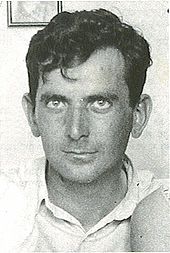
![EW_Stern [gang]](https://www.eliewieseltattoo.com/wp-content/uploads/2011/01/EW_Stern-gang1.jpg)
